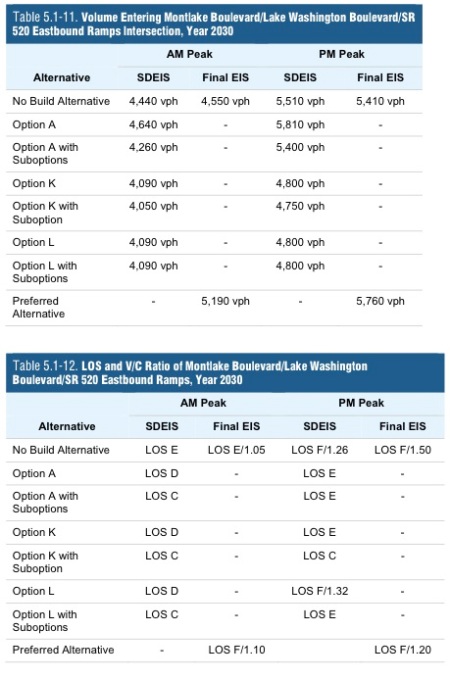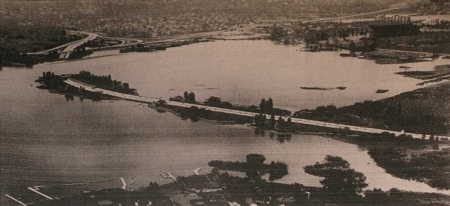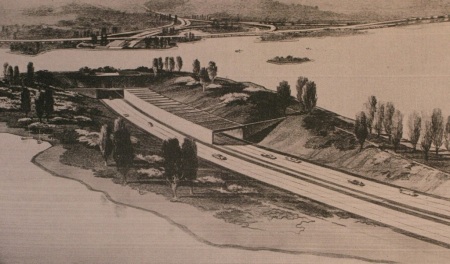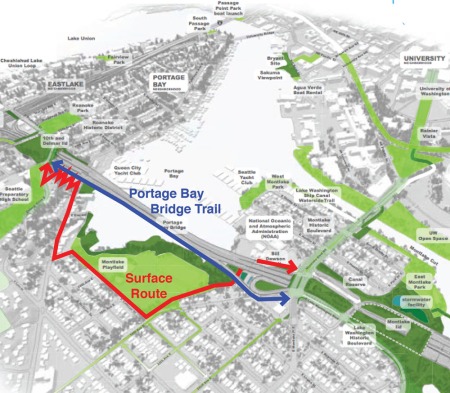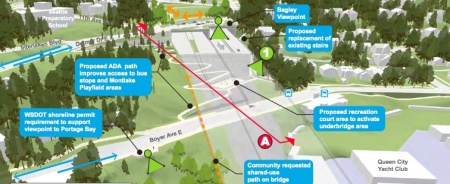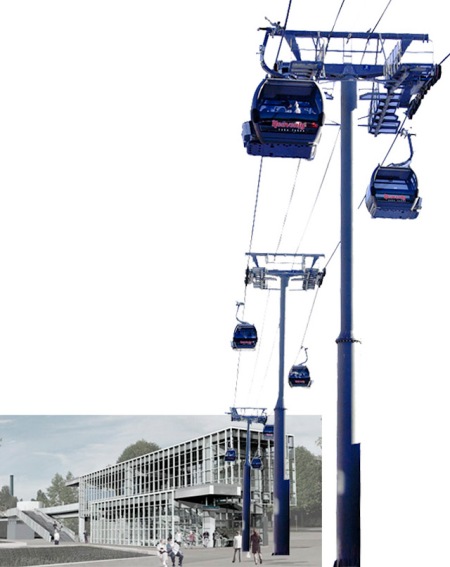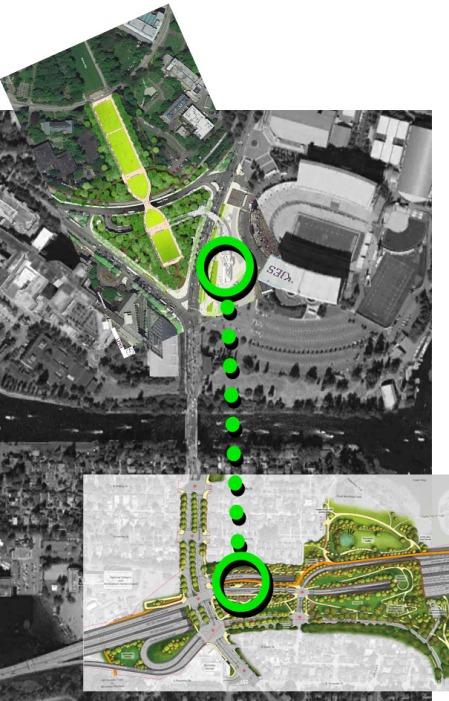Happy birthday ol’ floater! The 520 Bridge opened 50 years ago today — August 28, 1963. On the same day that local dignitaries gathered for a ribbon cutting ceremony on Lake Washington, Martin Luther King led millions in the March on Washington in DC. Unrelated facts? Not in the least.
But before getting to that, WSDOT has been celebrating 50 years of floating across State Route 520 by collecting stories about the highway. Their “520at50 Memory Lane” website and Twitter campaign allows people to write their own bits of local history:
My friends and I rode our bikes from our Ravenna homes to be a part of the festivities. We got there well before the crowds arrived and stationed ourselves in position to see the cutting close up… I do remember that my friends and I broke the ribbons before they were cut and we held them together until after the official cutting took place. Each of us had a bit of those pieces of plastic in our pockets as we rode our bikes back home that day. — David Oehler
… when my girlfriends mom let me user her Vespa scooter while my car was being repaired. I would then drive across the bridge, under construction on the Vespa. The first time the construction guys said I couldn’t go but I told them I had to get to class after visiting my girlfriend. They recognized a true romance in the making and let me cross every day for about a month until the bridge opened when I had to pay tolls like everyone else, 25 cents. — Chris Warner
Looking back, we joke that our early years at Seward School dealing with constant SR 520 and I-5 construction noise is the reason we were stunted intellectually. — Anonymous
The site has a bunch of historical photos, documents and vintage video showing the bridge under construction in the early 60s. The silent footage is worth watching for scenes of workers throwing hot rivets, burning tree stumps (is that the Arboretum?) and a cable safety gate stopping a charging dump truck before the drawspan. The gate wins. Sort of.
WSDOT has also published a more substantial history website of the corridor as part of the 520 highway replacement project: 520history.org. The site, developed in partnership with HistoryLink, broadly covers the tribes that once lived between Portage and Union Bays, the industrialization of Lake Washington and tells the more “official” history of the 1960s floating bridge construction. Lots of interesting new material there.
As commendable as these efforts to record history are, there are many stones left unturned. While there is mention of the freeway politics behind the Montlake-Medina route choice for 520 over Kirkland-Sandpoint — (Montlake’s wetlands and garbage dumps were easier obstacles to overcome) — there is nothing about the discourse of those debates including “white flight” fears of diminished property values and “social change.” And most glaringly missing from the story: the grass-roots citizens’ protest that later defeated 520’s planned successor, the R.H. Thomson Expressway through the Arboretum and Central District. Eugene Smith’s 2004 book Montlake: An Urban Eden touches on this, noting how Seattle Mayor Gordon Clinton framed the city’s preferred Thomson route:
[Clinton] wrote Senator Warren Magnuson in November, 1960, to … “preserve the Arboretum as a priceless asset to the City and the State.” He acknowledged that condemnation of private property was necessary and that it would cost half a million dollars more than Plan A, as determined by city-appointed appraisers. Their report had observed that, if the right-of-way left the homes on the east side of 26th Avenue, “the present owners will tend to move elsewhere . . . [and] their replacements are apt, and almost certain, to be of a lower social stratum and will drop the quality and, hence, the value of the whole Montlake Peninsula.” Plan B, on the other hand, would produce a “very minor reduction of values in the total Montlake Peninsula [and] would more than offset the added cost of the private property acquisition.”
With Plan B, the city then demolished about a dozen homes on 26th Ave E. Hard to imagine that happening today.
Anyways — happy birthday, Bridge!



